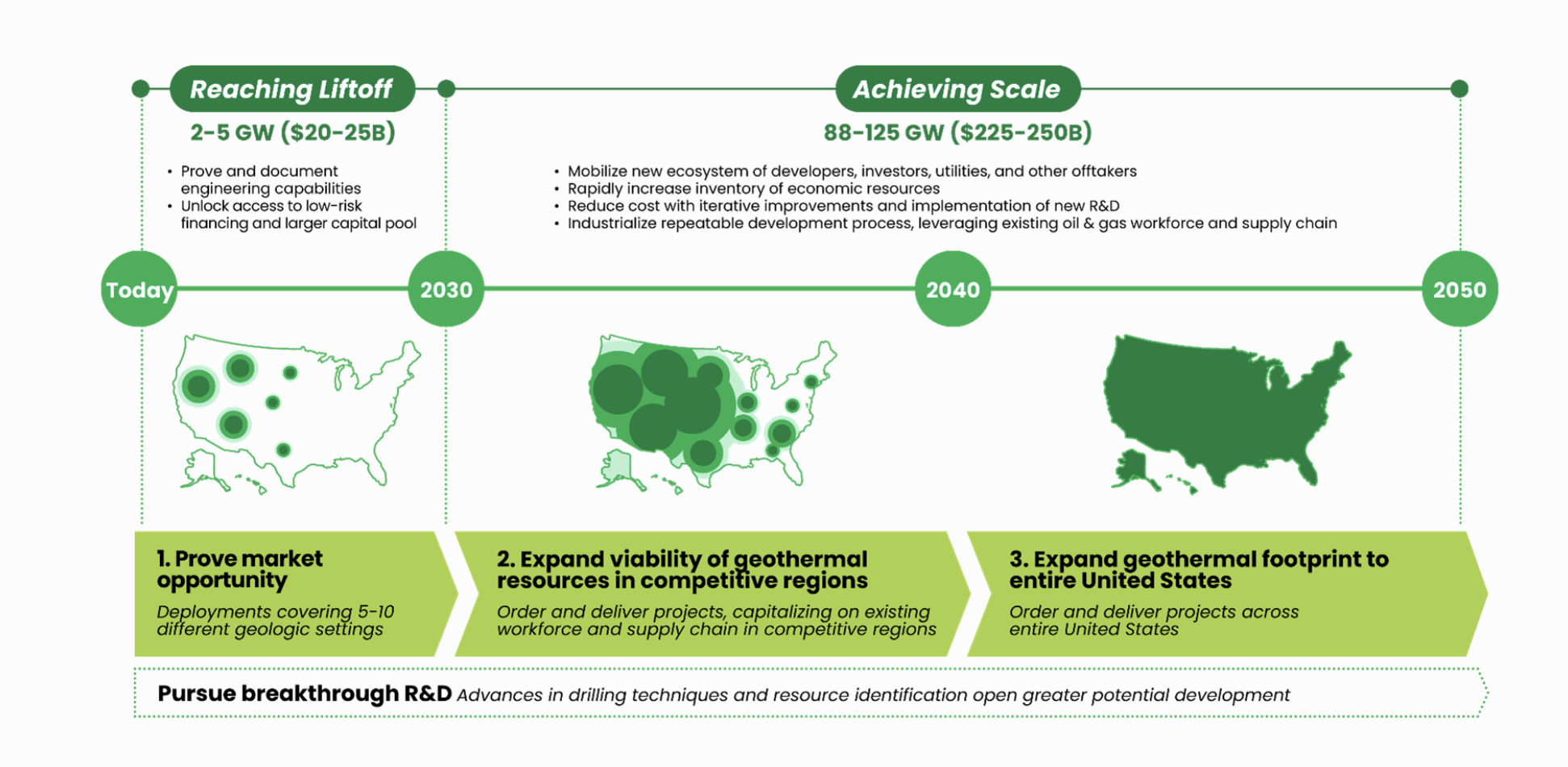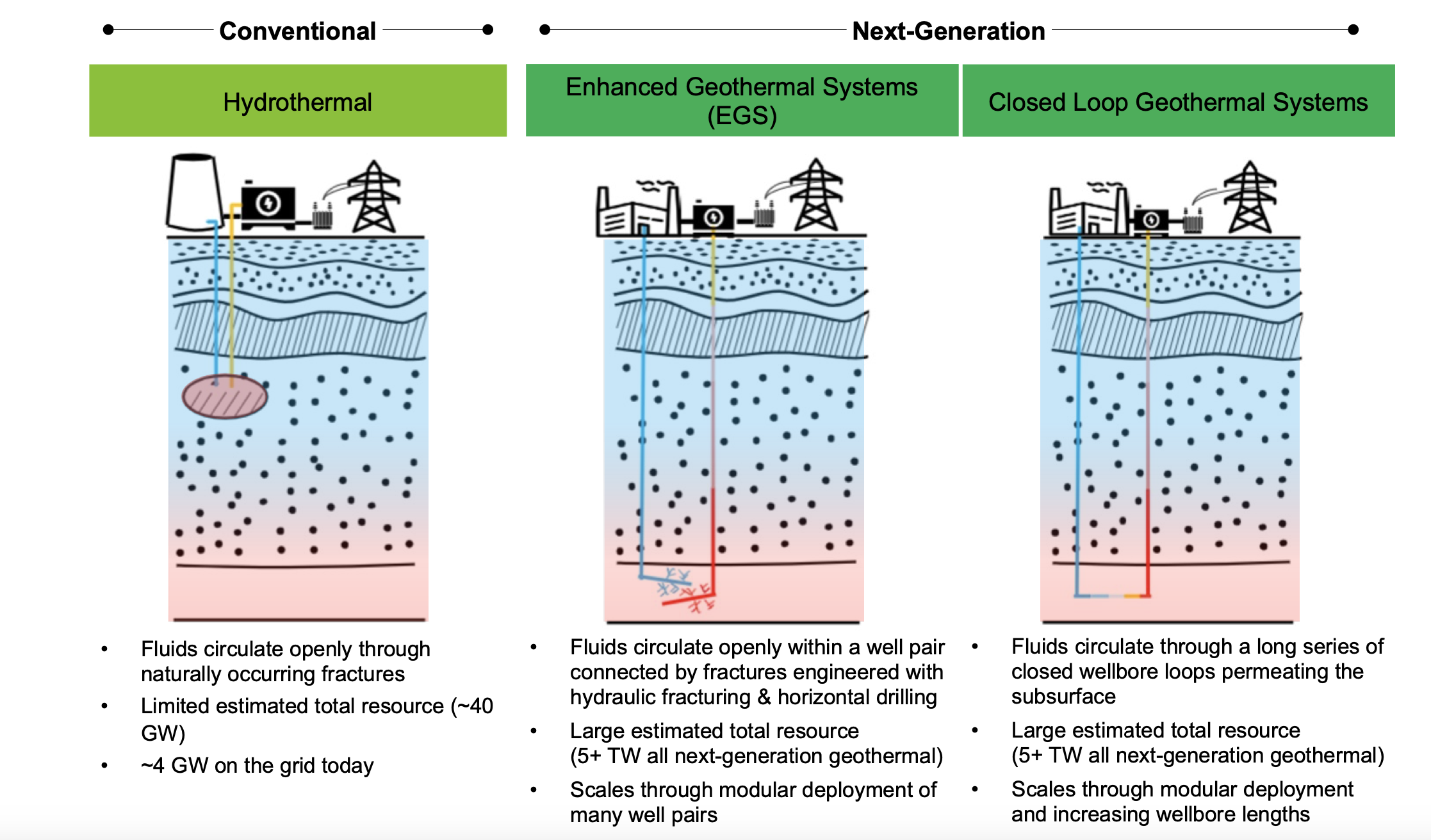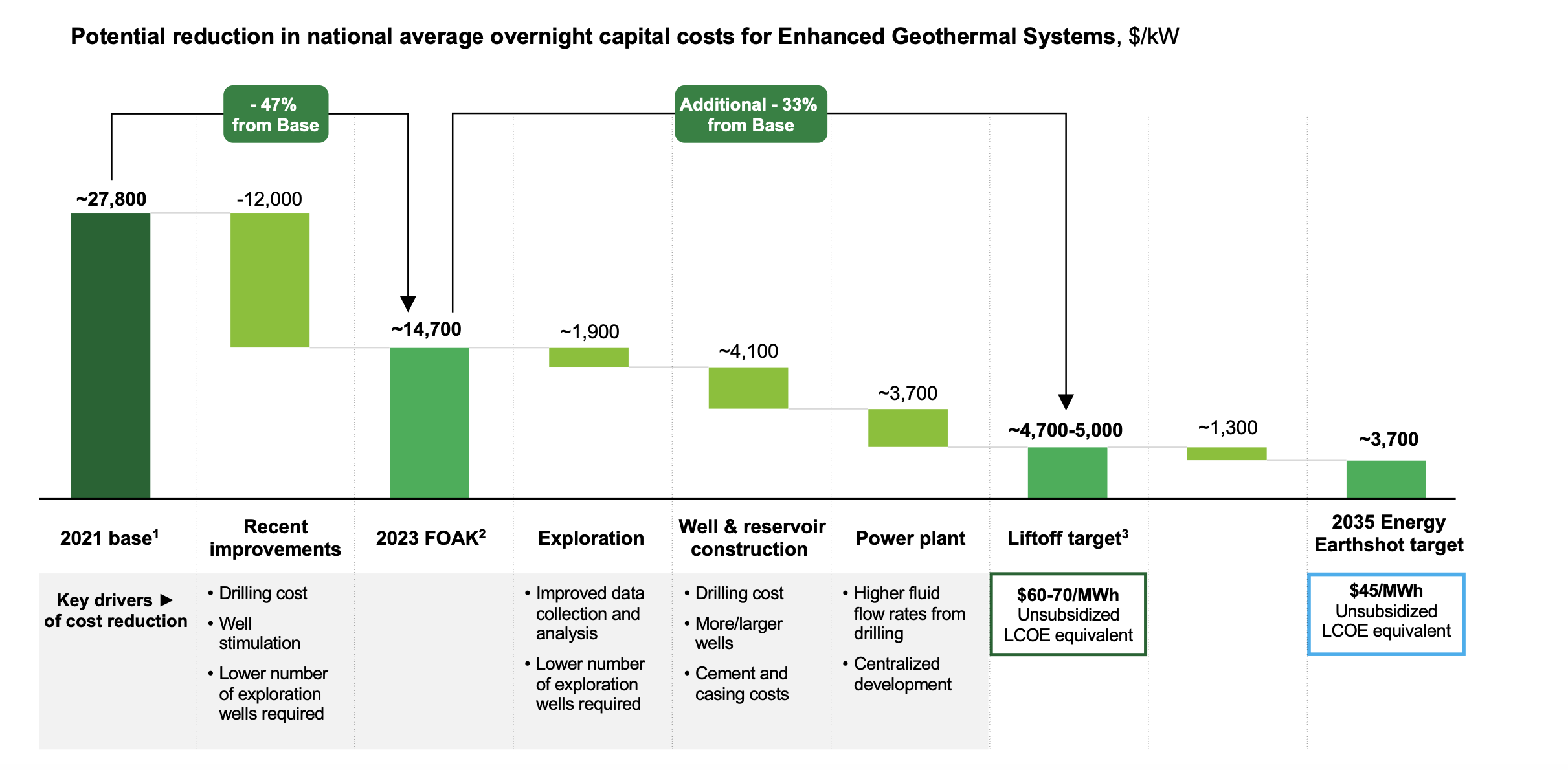Geothermal energy is having a moment.
Thanks to a new report from the US Department of Energy, the successful pilot and subsequent funding of a company developing enhanced geothermal systems, and another investment in a novel drilling technology that can bore even deeper into the Earth’s crust the promise of drawing power from the heat of the Earth anywhere in the world is drawing closer.
According to the DOE, $25 billion in new investment is needed by 2030 to unlock these energy technologies that can provide stable power to the energy grid and go a long way towards addressing the nation’s increasing demand for stable, zero-emission energy sources.
Hundreds of billions more in development funding will be required to bring the technology to a ubiquitous scale across the country, bringing up to 125 gigawatts of renewable power to the grid.
The estimates from the DOE may be understating geothermal’s potential. Using newer technologies still being refined in early pilots could increase that figure into several terawatts of clean power for utility grids.
Should these projects bear fruit, that would mean the US would have more than enough pollution-free power to meet the targets of 900GW of new fossil fuel-free resources for the grid.
 What are enhanced geothermal systems?
What are enhanced geothermal systems?
These technologies harness the Earth’s subsurface heat to generate electricity, offering a carbon-free renewable energy option that is independent of weather conditions or time of day. Unlike conventional geothermal power, which requires specific geological conditions like permeable rocks and nearby water sources, enhanced geothermal systems (EGS) can be developed in a wider range of locations.
They use techniques such as hydraulic fracturing to access heat in solid rocks at great depths, potentially unlocking vast new energy resources.
Recent developments have propelled the industry forward, with companies like Fervo Energy and AltaRock Energy leading the charge. Fervo Energy successfully tested a commercially viable system in Nevada and is working on a project in Utah aimed at providing constant, clean power by 2026 – thanks to a contract with Google, which will use the power for a data center.
The projects use hydraulic fracturing to create steam from injected water, which then drives turbines to generate electricity. This method also offers the potential to act as a giant underground battery, storing energy during low demand and boosting generation when needed.

Earlier in 2024, the DOE awarded three projects that will receive up to $60 million in financing to demonstrate the efficacy and scalability of enhanced geothermal systems.
Among them are Fervo Energy, Chevron New Energies and Mazama Energy, which is developing a project harnessing what’s called super-hot enhanced geothermal systems (which can reach temperatures above 375°C).
The Mazama Energy project will need to harness advanced drilling technologies being developed by companies like Quaise Energy, which raised $21 million in new equity financing from investors including Mitsubishi Corp.
The enabling technology stack
Enabling enhanced geothermal technologies to fulfill their promise will require a host of enabling technologies, but these are innovations borrowing heavily from the existing skillsets of the oil and gas industry.
That explains why oil and gas giants like Chevron, ExxonMobil and others are paying attention to the opportunity.
The technology stack for geothermal involves new subsurface mapping and identification technology to find the locations that are most suitable for drilling. Next generation high-temperature, high-pressure sensors, drilling tools, and well-casing materials will all be required for enhanced geothermal to reach its full potential.
Cost competitive power

Advancements in recent field demonstrations have already reduced estimated project development for enhanced geothermal systems by nearly 50% (Fervo is estimating a 70% reduction in cost for its project. And borrowing from the unconventional oil industry there are estimates that costs could decline even further to reach the DOE’s Energy Earthshot target of $45/MWh of unsubsidized, firm, baseload power. Even at $60-$70/MWh, the costs imply profit margins of between $10 to $30 per MWh at current power purchase agreement prices.
Corporate buyers are already coming on board. The recent agreement from Microsoft, Nucor, and Google to aggregate demand mentions enhanced geothermal energy systems as one of the technologies they will seek to encourage.
Government programs spur new development
The U.S. Department of Energy (DOE) has launched the Enhanced Geothermal Shot initiative, aiming to reduce the cost of EGS by 90% to $45 per megawatt-hour by 2035. This ambitious project seeks to make geothermal energy accessible to over 65 million American homes, highlighting the potential for geothermal technologies to significantly contribute to the U.S. clean energy mix.
In addition to government efforts, the industry has received a significant boost from the GEODE grant, a $165 million award from the DOE to a consortium led by Geothermal Rising, Project InnerSpace, and the Society of Petroleum Engineering International. This grant aims to accelerate geothermal energy development in the U.S. by leveraging oil and gas industry technology and expertise, marking a pivotal moment for cross-industry collaboration in clean energy.
Overall, the trajectory for enhanced geothermal technologies looks promising, with advancements in drilling and reservoir creation techniques driving the sector towards commercial viability. This evolution could play a crucial role in diversifying the global energy portfolio, offering a reliable, sustainable, and clean energy source capable of supporting the transition to a net-zero emissions future.
